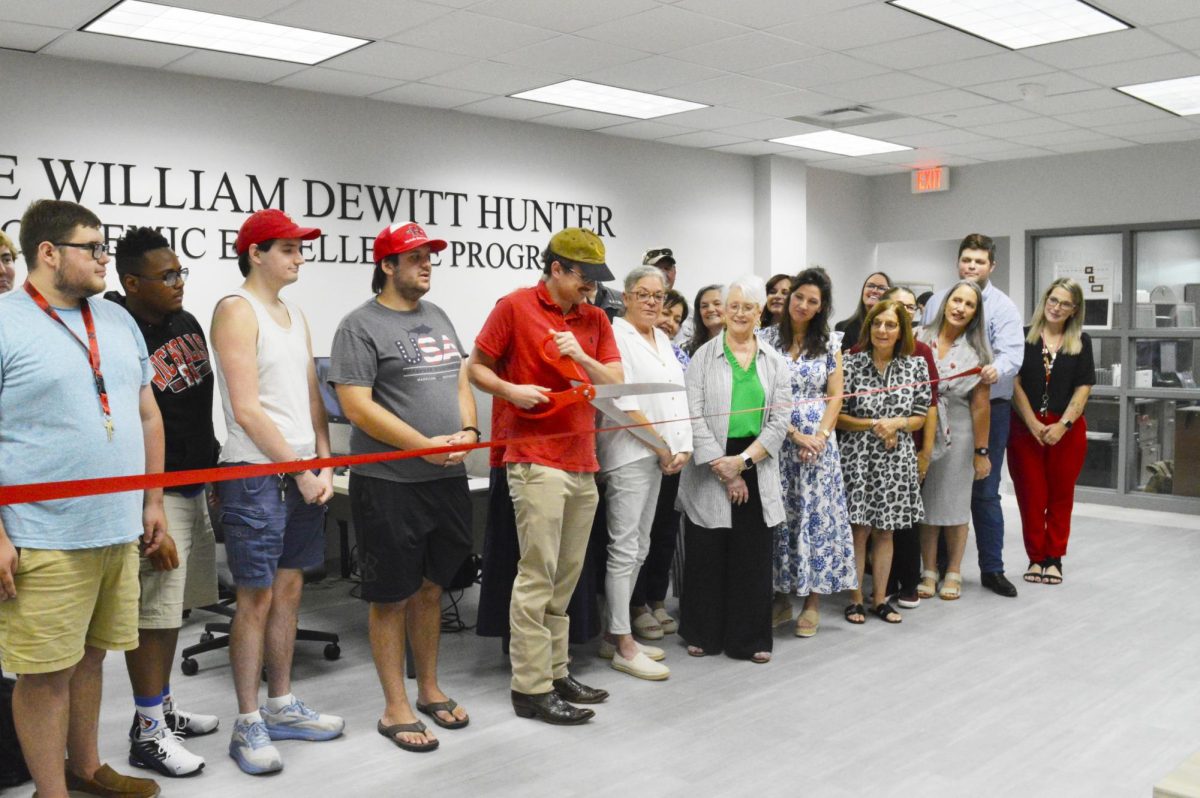In recent years, social media and educational tools have worked their way onto college campuses, in some cases simplifying schoolwork and changing the study habits of students.
The use of technology in the classroom, depending on the use, will determine if it benefits or harms students.
“It is like anything else in the classroom. When it is used in an appropriate way, it can benefit students, and if it is used negatively, it can harm,” Laynie Barrilleaux, vice president of academic affairs, said.
The use of technology in the classroom varies a lot at Nicholls. Examples are the use of online labs to complete classwork, clicker systems to take quizzes and check attendance, and the use of Moodle to communicate with classes, whether in class or online.
For example, students taking Math 100 or 101 use the Mathematics Enrichment Workshop (MEW Lab), which is a computer lab that is an extension of the studies. Students are required to go to the lab for a certain number of hours to do homework and take tests and quizzes.
According to a survey conducted by the Nicholls Worth, there are several programs on campus, including accounting, finance, economics, English, geology, biology and nursing, that also use online programs.
Moodle is the primary communication between students and professors outside of the classroom. It is classified as technology because it uses technological equipment to complete tasks. With Moodle, professors are able to divide the course into modules, which are blocks on the class page that specify which assignments need to be completed to pass that module.
According to Arrianna Smith-Martin, assistant professor of human performance education, “I can only speak for my class, but I give a lot of modules and discussion forums so students can interact with one another. The modules help students interact with the book and find information pertaining to the particular subject of the modules.”
Some professors with online classes use the modules as a guide for students.
For example, English 310 with Connie Sirois, instructor of English, is broken up into modules for each topic. The topic expands over a number of chapters with different assignments due on certain dates.
Smith-Martin feels like testing is the hardest part with online classes.
“Students expect to use the book while they are completing the test, but it is not just about finding answers, it is really about applying the information,” Smith-Martin said.
Eugene Dial, vice president for student affairs, said that with the quick development of technology in higher education, students are at a disadvantage if they are not exposed to the most current form of technology.
“Since students are competing with everyone in the world with the same skills, abilities and training. I think it will make the difference whether we as individuals or as a country will stay competitive based on how well trained our young people are trained in the use of technology,” Dial said.
With generation Y, people born between the early 1980’s to the early 2000’s, having a vast knowledge of technology the use of it outside the classroom has become common practice.
Of the 27 females and 24 males surveyed, 100 percent of them use some form of technology to do school work.
Social media can potentially be a huge distraction for a student outside of the classroom. According to the survey, 88.89 percent of females surveyed get on social networks while studying, whereas only 66 percent of males do.
“The potential problem with social media is the fact of students getting caught up and not getting back to their studies,” Barrilleaux said.
Smith-Martin cited an experiment she conducted with her own daughter.
“I asked her to put her phone on silent and flip it over and set a timer for 60 minutes and see how much work she could get done in that time verses tweeting, texting and using Instagram,” Smith-Martin said.
Dial also commented on the effects of social networking use on students. He said, “Some students can multitask while doing school work, but I hope whoever is using social media notices if it is an enhancement to their learning or a detriment.”
Technology changes classrooms, study habits for students
Pauline Wilson
•
November 8, 2012
0
More to Discover







